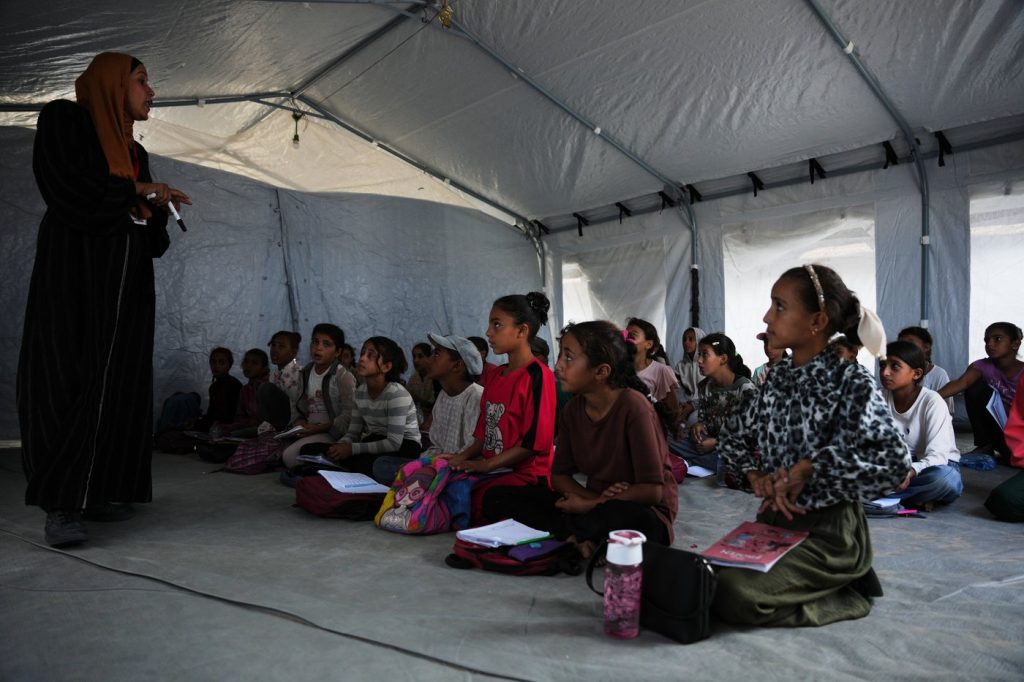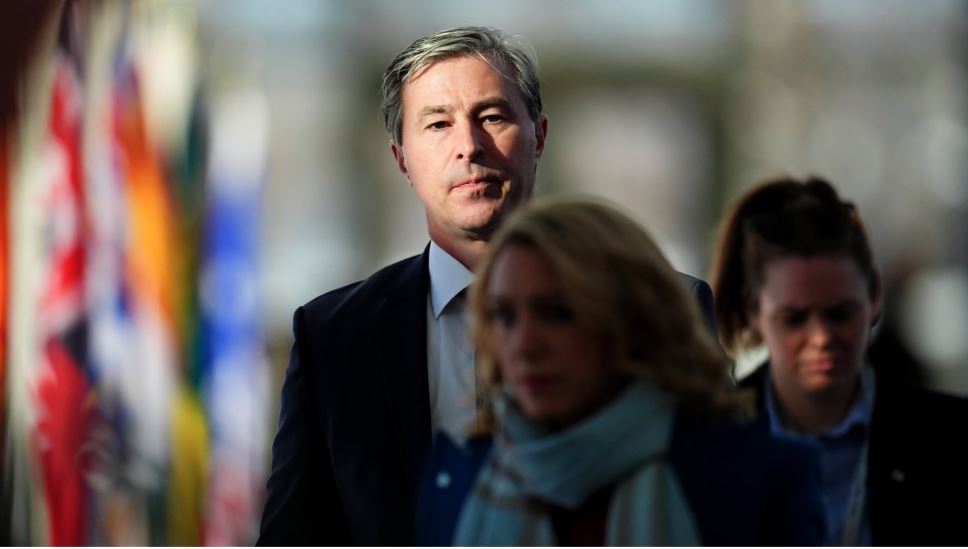Following a ceasefire reached last month, humanitarian officials are urgently working to reopen makeshift schools across the Gaza Strip. According to UNICEF, over 630,000 Palestinian children have missed school due to the ongoing conflict. As the situation stabilizes, the necessity to provide educational opportunities has become paramount for the affected youth.
The photo gallery accompanying this report showcases poignant images illustrating the realities faced by students and families in Gaza after the conflict. One striking photograph depicts Palestinian students attending class within a tent set up on the beach in Khan Younis, emphasizing the innovative yet precarious educational measures being implemented in the wake of infrastructure destruction. This scene captures the resilience of these young learners as they attempt to resume their education in such unconventional settings.
Another image shows students participating in a morning assembly at a school established on the beach, again in Khan Younis, highlighting efforts to maintain a semblance of normalcy amidst ongoing challenges. The assembly underscores the communal spirit and determination of both students and educators to revitalize the learning environment, despite the significant hurdles posed by the war.
The devastation wrought by the conflict is evident in the stories of families displaced from their homes. In a powerful image, Tahreer al-Awaini, a 33-year-old mother, holds her daughter's prewar certificates inside a classroom that now serves as their temporary living space. This stark juxtaposition of educational achievement and the harsh realities of living in a bombed-out school illustrates the personal impacts of the war on families and their children.
Furthermore, high school students are pictured returning to class weeks after a ceasefire was declared between Israel and Hamas at Kamilia School in the Old City of Gaza City. The photos taken here depict a sense of relief and hope among the students as they navigate the return to their education, which had been interrupted for an extended period. The reopening of schools not only offers academic learning but also serves as a crucial support system for these youths to cope with recent experiences of trauma and loss.
In Khan Younis, Tahreer al-Awaini is seen arranging blankets inside a classroom, which was previously bombed during the conflict. This image illustrates the enduring effects of the military operations and the resourcefulness of families trying to rebuild their lives amid the debris of their former environment. Additionally, the actions of students filling water tanks within the same bombed structure highlight the community's ongoing struggle and commitment to restoring their educational infrastructure.
Pictures of students amidst the ruins of their schools convey the magnitude of destruction caused by the conflict, serving as a powerful reminder of the necessity for continued humanitarian efforts. The collective imagery portrays not only the resilience of Gazan families but also the urgent need for international support to facilitate the rebuilding of educational facilities and the broader community.
Overall, the situation in the Gaza Strip remains precarious, but the efforts to reopen schools and provide basic education reflect the determination of the community to reclaim normalcy in the aftermath of a devastating conflict. The reopening of these makeshift schools, despite the conditions, illustrates the unyielding spirit of the students and their families, emphasizing the vital importance of education as a cornerstone for their future.










